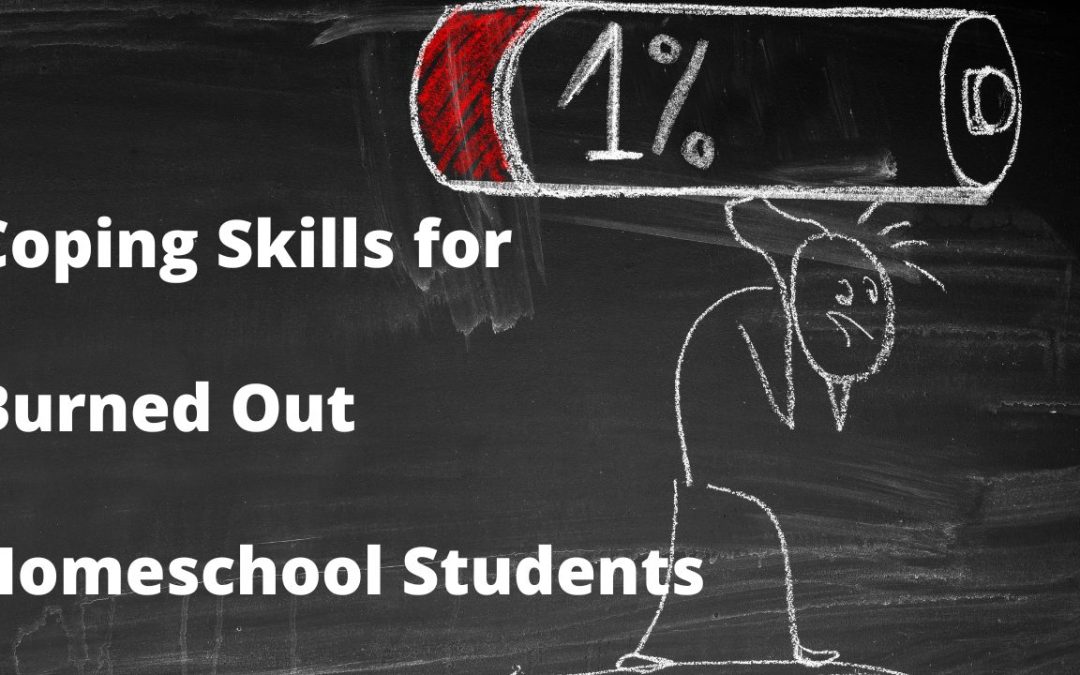When I decided I wanted to write about burnout among homeschooled students, I didn’t realize that the research is mostly slanted towards burnout in parents. (As in an article called “18 things to Try Before Quitting.”) Only after altering my key word search numerous times, was I able to find a few articles about homeschool kids getting burned out in school. Mostly, it was necessary to equate burnout in K to 12 public school kids with their same-age cohorts in homeschool.
The fact is, just because you have pulled your student out of what you have determined to be a negative public-school scenario and started homeschooling them, doesn’t mean they are not still subject to many of the same emotional, psychological, and social traumas they faced in public schools. The problems are still there – they just look different.
WHAT DOES K TO 12 SCHOOL BURNOUT LOOK LIKE?
Psychology Today says that “burnout is more than simple exhaustion from work or school. While students can certainly work themselves to the point of exhaustion—and that’s something parents should be aware of and address—burn out occurs when students overwork for long periods of time while feeling a lack of control over the situation, with little or no passion about the work or a reason to continue.”
Rachel Perez, writing for the magazine Smart Parenting and the website “Understood” (Signs of Burnout in Children | Understood), points out seven common signs of burnout in kids, as follows:
1. Your child suddenly doesn’t care about things she used to be passionate about.
Your child is not putting in the work in something he used to love, whether it is a hobby or a school performance.
2. Your child’s school performance suffers. Of course, kids are not defined by their grades, but when he is not making an effort anymore or does not care, then something may be wrong.
3. Your child is not interested in social interactions. He used to go on and on about his friends. Now he suddenly doesn’t talk about them anymore and doesn’t want you asking about them either.
4. Your child procrastinates and always turns in work late. Your little one used to be excited to finish a drawing homework. Then he doesn’t even start on an artwork that has been due yesterday. Often, your child falls asleep during class hours.
5. Your child is anxious. There’s an exam coming up, and your child is so worried about taking it that it disrupts his daily routine. For example, he cries when studying or during the test, or he’s easily distracted and can’t focus on reviewing.
6. Your child always complains of aches and pains. Your child may be using ailments as excuses to get out of a school activity or family get-together. His body aches and pains seem to be recurring more often and increasing in intensity as well.
7. Your child is moody, easily annoyed. Your child used to be a ray of sunshine when he walks in a room. Now, he always appears tired and rarely smiles anymore. He’s also easily annoyed, upset, or irritated by the littlest things.”
IS HOMESCHOOL BURNOUT DIFFERENT THAN PUBLIC SCHOOL BURNOUT?
The easy answer is – yes, to some degree. Many of the burnout signs you see in your student would be happening regardless of whether they are registered in public school or home school. Kids are kids. They encounter many similar developmental experiences and social situations. Just because you keep them at home during school hours doesn’t change what’s happening to their psychology and physiology.
Perhaps the most obvious difference is that, unless the parent is going out of their way to create important social interactions for their homeschooled child, that child may feel isolated and alone and miss his or her friends at school.
Another source of homeschool stress can be the lack of a pre-determined schedule. Kids who have been removed from public school are accustomed to a set routine – a daily schedule. Predictably scheduled assignments and exams. If you are a homeschool parent who affords your student 100% flexibility in choosing and managing their own course load, it may be too large a task for the child and cause them to back off, get moody and withdrawn, and seem disinterested in their education.
HOW PARENTS CAN HELP PREVENT OR REMEDY HOMESCHOOL BURNOUT
- Use a portion of your daily instructional time to work with you child on essential life skills that can help them cope with daily life challenges. This could include self-care instruction as well as stress management techniques such as “mindful meditation.’” Anything you can offer to give your kids even a few minutes to relax and forget the school day stress may be helpful to their emotional condition.
- Talk with your child about what they’re feeling. Ask them what’s wrong. Try to identify the source of their anxiety. Based on your talks, reset your educational goals for them and adjust your own expectations for their progress.
- If your child is falling short of your own expectations, let them know that you appreciate what they have accomplished and help them outline what needs to be done to help them lean more and improve. Be positive and encouraging and don’t push them too hard.
- Help your homeschool student learn about better time management and study habits so they’re capable of being organized and purposeful in their work and study.
AND FINALLY….
The most important thing you can remember when it comes to working with a homeschool student who is suffering from burnout, is to set a good example. Your student(s) will tend to follow your lead in dealing with burnout stress and anxiety. Give them your unerring love and demonstrate that it’s OK for them to give themselves some love.

